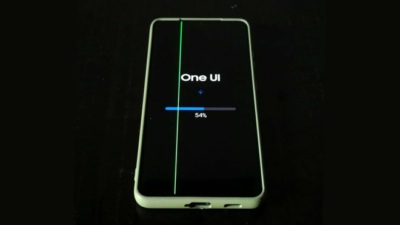Smartphone sales to Decline in 2022

Smartphone sales are about to decline. According to a new report, the mobile phone market is entering a phase of recession. This drop in sales is mainly due to inflation, which has reached a record level, the shortage of chips, and the various lockdowns announced in China.
The International Data Corporation (IDC), a renowned analytics firm, has just released its new smartphone market report. Based on the collected data, the experts expect a decrease in turnover of 3.5% during the year. Only 1.31 billion phones will be sold worldwide, IDC estimates. For its part, Strategy Analytics, global smartphone sales will shrink by 2%. All brands are affected.
To justify its forecasts, the analysis firm points the finger inflation, which reached record levels. Inflation in the eurozone was 8.1% over one year. In the United States, inflation has reached a record pace in 40 years, rising 6.6% in one year. Due to the loss of purchasing power, the demand for new smartphones is likely to decline.
Lockdowns in China reduce smartphone sales
“The smartphone industry faces mounting headwinds on many fronts — dwindling demand, inflation, ongoing geopolitical tensions, and ongoing supply chain constraints,” said Nabila Popal, research director at IDC, referring in particular to the war in Ukraine, which crashes. despite negotiations with Russia. For IDC these are mainly: production problems that will hurt the mobile phone market.
The lockdowns announced by China have paralyzed several factories in the Shanghai region. Several Apple suppliers, such as Pegatron and Foxconn, were forced to close their factories for several days. iPhone production experienced significant disruptions. “The lockdowns have simultaneously affected global supply and demand by reducing demand in the world’s largest market (Editor’s Note: China) and tightening the bottleneck of an already fragile supply chain,” continues IDC.
The lockdowns announced by the Chinese authorities also contribute to the shortage of computer chips. Since the Covid-19 crisis, semiconductor production lines have not ceased to be bogged down. Despite the opening of new factories, manufacturers are still unable to meet the demand from brands. However, IDC believes that “ongoing problems with semiconductor supply will ease in the second half of 2022.” Facing This Shrinking Market, Smartphone Manufacturers Revise their sales targets for the year 2022. A few days ago, a leak revealed that Apple expects to sell 20 million fewer iPhones than expected.
Despite the arrival of the iPhone 14 within a few months, the Cupertino group has warned its suppliers about very cautious sales forecasts. However, IDC assures that Apple remains the smartphone supplier least affected by the measures against Covid-19 in China. The company benefits from “greater control over its supply chain”. The report also notes that Apple customers are: less affected by the loss of purchasing power that is the result of inflation. Samsung has made a similar decision. The South Korean group, the market leader, plans to cut its annual estimates by 10%, targeting 270 million units sold, up from 300 million previously.
A strong comeback from 2023
The IDC report is more optimistic for next year. According to the analyst firm, the recession in the telephony market promises to be short-lived. The market should recover from 2023 to take advantage of the end of the computer chip shortage. Sales are expected to increase by 5% globally next year, driven in part by strong demand for 5G smartphones. “Sales of 5G devices are expected to grow 25.5% year-over-year by 2022, accounting for 53% of new shipments at nearly 700 million units,” IDC predicts.
In this area, brands such as Apple and Samsung take the lion’s share. The rise of 5G was mainly driven by the first compatible iPhone, the iPhone 12. The success of the range, and of the iPhone 13, contributed to the population of the 4G successor.
Research Snipers is currently covering all technology news including Google, Apple, Android, Xiaomi, Huawei, Samsung News, and More. Research Snipers has decade of experience in breaking technology news, covering latest trends in tech news, and recent developments.











